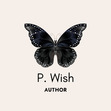P. Wish's Blog, page 3
January 8, 2016
The Doppelgänger Diaries: The First Draft
 I hope you’re all doing well. I’m starting a series called ‘The Doppelgänger Diaries’ detailing my recent book writing experience. As you know, I’m in the process of editing my new book, The Doppelgänger. The book is a psychological thriller and will be out in late March. For more details such as book covers and free chapters, subscribe to my newsletter.
I hope you’re all doing well. I’m starting a series called ‘The Doppelgänger Diaries’ detailing my recent book writing experience. As you know, I’m in the process of editing my new book, The Doppelgänger. The book is a psychological thriller and will be out in late March. For more details such as book covers and free chapters, subscribe to my newsletter. This writing series will consist of five posts, published on Fridays. Today’s post will detail the emotional and physical process I went through to complete my first draft. Writing this book has been a journey, and I hope through these posts, I can take you on that journey with me.
I began writing the first draft of The Doppelgänger in July 2015. I wrote 15,000 words and shelved it. I had a basic idea, but it wasn't well-developed. It needed time to develop in my brain.
I returned to the draft in November while looking for new book ideas for Nanowrimo. I had set my mind on completing a book in November 2015. I didn’t officially register for the event, but my target was to complete the first draft of my book by the end of the month. So, instead of starting something new, I continued writing The Doppelgänger.
I did the math first. I set a goal of 2,500 words each day. The completed first draft was supposed to be 60,000 words. The first draft consisted of 24 chapters, 2,500 words each. I wrote ten to twelve each night because that time slot works well for me.
Shortly before starting the book, I read Stephen King’s On Writing. I reviewed the book here. His work ethic inspired me to stick to a schedule. I would highly recommend the book to any aspiring author.
The first draft of The Doppelganger is the most challenging thing I’ve ever written. I didn’t plot this book so; I didn’t know where I was going with the story. Every time I looked at a blank page, doubts swallowed me. I read a lot of motivational posts online, meditated, read positive affirmations and visualized the result to keep myself on track. When all that didn’t work, I resorted to listening to depressing ballads.
But, I wrote every day. No matter how I felt, I wrote those 2,500 words every night. When I sat before the computer screen 10-12 every night, I lost myself in the story. All I could think of was the character and her life.
There were days I was frustrated because of things I couldn't control- Somebody or other would show up without warning; I'd fall sick or I'd have to go somewhere. However, deep inside, I had the burning desire to finish my novel, and that pulled me through.
By the twentieth day, I had a 60,000-word manuscript. I can’t express how relieved I was to have completed the first draft. I saved a copy of it and put it away. I didn't want to look at it until the end of that week.
Thus began my romance novel binge. For the next seven days, I read legions of romance novels, watched every romantic comedy I had missed and spaced out. Those days of reading were sheer bliss, and I enjoyed every minute of it.
In my head, I worked through the plot holes in my manuscript. Every time I remembered a plot hole, I wrote it down. I also began reading articles on self-editing, rewriting, etc. I'll tell you more about that in the next post.
For now, I want to say that the experience was transformative. I feel like a brand new person now. Each day, I overcame my resistance and pushed myself harder. When I saw the completed manuscript, I realized that two hours every day added up to a novel in a month. I did a little 'happy dance' when I finished the first draft and filmed it to remember the journey.
That's all for today. The next article in this series is about my second draft. I know, being a writer isn't as romantic as movies make it look. However, I endeavor to be honest in my posts because the truth is the best version of events.
If you have any suggestions or questions, drop me an e-mail or comment below. I look forward to hearing from you all.Click here to read more articles on writingSubscribe to my newsletter for a free short story and updates. #mc_embed_signup{background:#fff; clear:left; font:14px Helvetica,Arial,sans-serif; } /* Add your own MailChimp form style overrides in your site stylesheet or in this style block. We recommend moving this block and the preceding CSS link to the HEAD of your HTML file. */Subscribe to our mailing list
Published on January 08, 2016 00:00
January 1, 2016
The Best Books I Read in 2015
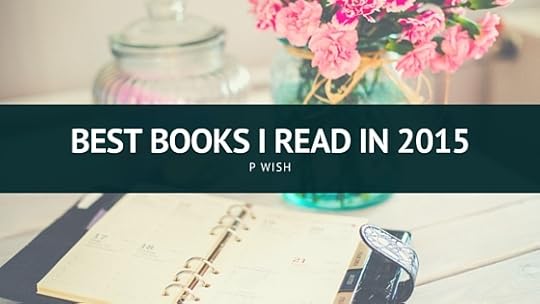 Here's a list of the top 20 books I read in 2015. I read more non-fiction than fiction this year. 2015 has been great for reading because I managed to read many books this year. If you want to read a detailed review, click on the title of the book.
Here's a list of the top 20 books I read in 2015. I read more non-fiction than fiction this year. 2015 has been great for reading because I managed to read many books this year. If you want to read a detailed review, click on the title of the book. Fiction
I must confess; I didn’t read much fiction this year. Here’s a list of some good ones I read.
Malice by Keigo Higashino (mystery) : Malice by far the best fiction book I read in 2015. I am a big fan of Keigo Higashino’s no-nonsense writing style and complex plots. If you love detective stories, you’ll enjoy this one. Mistress by Amanda Quick (historical romance): Mistress is a well-written historical romance novel. I immensely enjoyed reading this book by her. The Paid Companion by Amanda Quick (historical romance):The Paid Companion introduced me to Amanda Quick. I have since read most of her books. If you enjoy a well-written historical romance with elements of mystery, give this one a shot. On Top of a Hill there’s a Billy by J. Seth Davey (children’s picture book): The illustrations are marvellous. I came across this book on Story Cartel and downloaded it in exchange for a free review. On top of a hill, there’s a Billy is a quirky picture book that will give you a visual treat with a message. To hear a narration of the book, visit the author’s youtube channel. Bared to You by Sylvia Day (erotica): I finished reading this book recently. Bared to you is not everybody’s cup of tea. I enjoyed the realistic background and relatable side characters. I still have my reservations about Gideon Cross. If Tomorrow Comes by Sidney Sheldon (thriller): An entertaining thriller by one of the best thriller writers. If you like strong female leads and complex plots, try this one. The Girl on the Train by Paula Hawkins (psychological thriller) : This book won the Goodreads award for the best Thriller this year. The girl on the train is an intriguing psychological thriller. The Cuckoo’s Calling by Robert Galbraith (mystery) : The Cuckoo’s Calling reminded me of Agatha Christie-style mysteries. The book is slow and descriptive but packs a punch in the ending. Salvation of a Saint by Keigo Higashino (mystery)- A good mystery novel to read on a flight. Private Arrangements by Sherry Thomas (historical romance) : This was the first Sherry Thomas book I read. The plot is emotional and delivers a fulfilling ending.
Non-Fiction
2015 was a year of non-fiction. I read many non-fiction books this year. It was very difficult to choose the best ones.
Fire up your writing by Jodie Renner: I raved about this book recently on my blog post. Fire up your fiction is an excellent guide to sprucing up your novel. On Writing by Stephen King: The definitive guide to writing. I can’t believe I waited for this long to read it. On writing is a practical, realistic guide to becoming a better writer. The Lean Startup by Eric Ries: The best business book I read this year. It changed my perspective on startups. I love the book’s focus on iteration. The idea has gained momentum since the book’s release. The Art of Social Media by Guy Kawasaki and Peg Fitzpatrick : A simple, easy-to-read guide for beginners. I enjoyed reading the book filled with pictures and examples. The suggestions are easy to follow. First 1000 Copies by Tim Grahl : I finished reading this book recently. Grahl focuses extensively on mailing lists but covers many other topics. The book has many examples. I am currently reading this next book, The Book Launch Blueprint and am enjoying it immensely. Think and Grow Rich by Napoleon Hill: This book changed my thinking forever. Think and Grow Rich is one of the most popular books on the law of attraction. Despite being more than seventy years old, the book manages to resonate with readers. Wishcraft by Barbra Sher : Another life-changing book I read this year. Wishcraft helps you build a step-by-step plan to get to your dreams. APE- Author Publisher Entrepreneur by Guy Kawasaki : Excellent guide on self-publishing and all that comes with it. How to Make a Living with your Writing by Joanna Penn : An essential book on self-publishing. Check out her free book, Author Blueprint 2.0 too. Zero to One by Peter Thiel : Wisdom from one of Paypal’s founders.
I'll see you next week with another post. Happy new year everyone! Hope you read many good books this year. Share this list with your friends and spread the love of reading.
I included a downloadable a copy of this list (along with the best albums I listened to this year) in my December newsletter. To get the list, subscribe to my newsletter below. For a PDF version of this list, subscribe to my newsletter. (Bonus: 6 Best Albums of 2015) #mc_embed_signup{background:#fff; clear:left; font:14px Helvetica,Arial,sans-serif; } /* Add your own MailChimp form style overrides in your site stylesheet or in this style block. We recommend moving this block and the preceding CSS link to the HEAD of your HTML file. */Subscribe to our mailing list
Published on January 01, 2016 00:00
December 25, 2015
The Year in Review: 2015
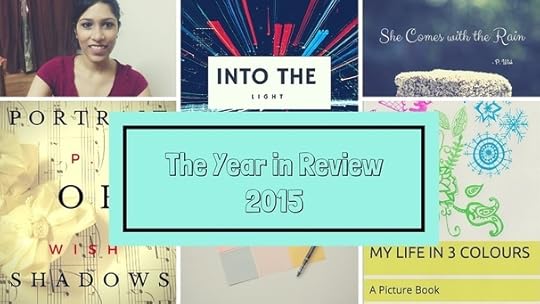 First of all, Merry Christmas to everyone. I hope you have a great Christmas. Eat well, be merry, give to those in need and enjoy. I will be in China by the time you read this post. Check my Instagram account for photos.
First of all, Merry Christmas to everyone. I hope you have a great Christmas. Eat well, be merry, give to those in need and enjoy. I will be in China by the time you read this post. Check my Instagram account for photos. I promised to do a review of 2015 in my previous post. Here it is. This post is going to be very personal in nature. If you’re not comfortable reading draining personal posts, feel free to drop out at this point.
If I were to describe this year in one word, it would be ‘death’- both physical and metaphysical.
On the personal front, it was very challenging. I’ve seen more deaths this year than the rest of my life put together. All of them were sudden and unexpected. I lost a family member. Many people around me lost a near and dear one this year. I also had to move twice and had a brush with unemployment.
November marked my first meditation anniversary. I’ve been meditating every day for a year. When I started meditating, I could barely keep my eyes closed for five minutes. I mention this because I feel meditation has helped me handle personal tragedies better. I’m grateful for everything, good and bad; I experienced this year because it has helped become the person I want to become.
On the professional front, it has been another kind of ‘death’. I self-published my first book this year (hurray!). I also wrote the first draft of my next novel. I admit I was clueless in the beginning (probably still am), but I’ve learnt a lot about writing, marketing and publishing. I met many wonderful people and read more than 100 books this year.
I’ve also gotten into a writing schedule, something I’ve been trying to do for the past ten years. In other words, 2015 has been the death of procrastination, laziness, fear, inhibition and sticking to my comfort zone.
2015 was nothing like I imagined. I expected it to pass me by like harmless spring breeze, but it was a vicious tornado. It transformed me. I am still idealistic, impatient and rough around the edges but hey, there’s always 2016.
Now we get to the new year resolutions bit. I am not a believer in new year resolutions. That being said, my resolution for 2015 was to follow my dreams. My resolution for 2016 is to release at least one full-length novel.
As I mentioned in my previous post, I’m done with the first draft of my upcoming book. This will be my first full-length novel. I still need to go through an intensive editing process before it is ready for publication. Expect some news around April or June.
If I ruined your Christmas with my sappy post, I apologize. Have a little cake and wine and forget about it.
Goodbye, 2015. I’m so happy you’re over. You tormented me until the last minute.
Welcome, 2016.
A year ago, I’d have said, "I hope 2016 is easier".
But now, I know better. So 2016, don’t you dare go easy on me. Hit me with all you’ve got.
Wishing you all a wonderful new year,
P WishTo read more personal posts, click hereSubscribe to my newsletter for updates about my upcoming novel. #mc_embed_signup{background:#fff; clear:left; font:14px Helvetica,Arial,sans-serif; } /* Add your own MailChimp form style overrides in your site stylesheet or in this style block. We recommend moving this block and the preceding CSS link to the HEAD of your HTML file. */Subscribe to our mailing list
Published on December 25, 2015 00:00
December 18, 2015
A Guide to Surviving Novel Re-Writes
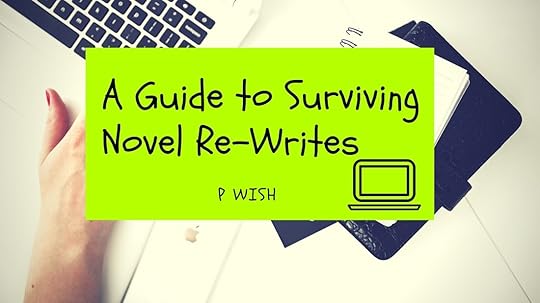 Welcome, to my first writing update post this year. I usually avoid talking about a novel until I finish writing. However, I wanted to share my journey on this one. This post is going to be personal in nature, unlike the posts I usually write.
Welcome, to my first writing update post this year. I usually avoid talking about a novel until I finish writing. However, I wanted to share my journey on this one. This post is going to be personal in nature, unlike the posts I usually write. If you’ve read my Twitter updates, you know my next book is a psychological thriller. I’m working towards a late March release. Writers and deadlines have been enemies since the beginning of time, and now I know why.
I finished writing the first draft of my novel in November. The biggest lesson I learnt was, first drafts suck. That leads to the second lesson- writing is re-writing. So, here I am, re-writing my book. I’m more than halfway through the re-write as of today.
Here are a few things that helped make this process tolerable and even enjoyable.
The first is Adele’s new album, 25. I’ve been waiting for this album since 21. It’s a great album, and if you haven’t heard it, you need to. I listen to it, at least, six times a day. Her soulful music has helped me live through this arduous process.
Other albums that helped me were Sam Smith’s Into the Lonely Hour, Emeli Sande’s Our Version of Events, Taylor Swift’s 1989 and Hozier’s Take me to Church. I don’t know why I’m addicted to British music.
A book that helped me during this process is Fire up your Fiction by Jodie Renner. Though I’m not at the editing stage yet, her advice helped me ‘show, not tell’ (and I know I’m guilty of that). I reviewed the book on my Booklikes blog if you want to check it out.
Another thing that helped me was guided meditation. I did Deepak Chopra’s 21 Day challenge in November. I do random, guided meditation videos now. I also read positive affirmations every day.
It’s easy to drown in self-doubt during the writing process. When I looked at the first draft, I almost gave up. That’s why I re-write and edit. It makes me feel hopeful. Overall, I enjoy re-writing more than the first draft. At least, I don’t have blank pages staring at me.
I also found the secret ingredient to re-writing success: chocolate. I’ve eaten so many candy bars in two months that I probably have sugar pumping through my veins. In my defence, I try to eat dark chocolate and protein bars (who am I kidding?). Sometimes, all you need is a sugary burst of energy to stimulate your brain.
Those were my four ingredients to re-writing success: Adele’s 25, Fire up your fiction, guided meditation and chocolate.
The year is almost coming to an end, and my deadline is fast approaching. It was a wonderful year. I’m going to end it with a trip to China. You can find pictures on my Instagram account.
I’ll do a yearly round off post next week. Thank you for your support this year. Keep going. The end is near.
Until next Friday,
P Wish To learn more about my books, click hereFor more updates and a free short story, subscribe to my newsletter. #mc_embed_signup{background:#fff; clear:left; font:14px Helvetica,Arial,sans-serif; } /* Add your own MailChimp form style overrides in your site stylesheet or in this style block. We recommend moving this block and the preceding CSS link to the HEAD of your HTML file. */Subscribe to our mailing list
Published on December 18, 2015 01:00
December 11, 2015
21 Inspirational Quotes for Writers
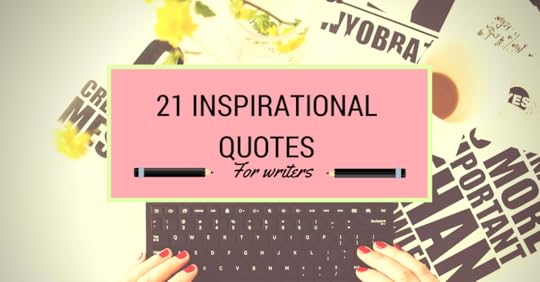 Felling stuck or uninspired? Need some motivation to blast through your next novel or re-write? I've put together a list of inspiring quotes by writers to keep your spirits up.
Felling stuck or uninspired? Need some motivation to blast through your next novel or re-write? I've put together a list of inspiring quotes by writers to keep your spirits up.“Your first written sentence is the foundation of all of your dreams.”
― Rob Bignell, Writing Affirmations: A Collection of Positive Messages to Inspire Writers
“Writing heals my heart like no pill ever could.”
― Rob Bignell, Writing Affirmations: A Collection of Positive Messages to Inspire Writers
“Keep traveling, even if you don't know where the road will end.”
― Lailah Gifty Akita, Beautiful Quotes
“There is no greater agony than bearing an untold story inside you.”
― Maya Angelou, I Know Why the Caged Bird Sings
“There is nothing to writing. All you do is sit down at a typewriter and bleed.”
― Ernest Hemingway
“If there's a book that you want to read, but it hasn't been written yet, then you must write it.”
― Toni Morrison
“You must stay drunk on writing so reality cannot destroy you.”
― Ray Bradbury, Zen in the Art of Writing
“Fiction is the truth inside the lie.”
― Stephen King
“History will be kind to me for I intend to write it.”
― Winston S. Churchill
“We have to continually be jumping off cliffs and developing our wings on the way down.”
― Kurt Vonnegut, If This Isn't Nice, What Is?: Advice for the Young
“I can shake off everything as I write; my sorrows disappear, my courage is reborn.”
― Anne Frank
“All you have to do is write one true sentence. Write the truest sentence that you know.”
― Ernest Hemingway
“Fill your paper with the breathings of your heart.”
― William Wordsworth
“You can make anything by writing.”
― C.S. Lewis
“Tears are words that need to be written.”
― Paulo Coelho
“If my doctor told me I had only six minutes to live, I wouldn't brood. I'd type a little faster.”
― Isaac Asimov
“The true alchemists do not change lead into gold; they change the world into words.”
― William H. Gass, A Temple of Texts
“The role of a writer is not to say what we can all say, but what we are unable to say.”
― Anaïs Nin
“Find out the reason that commands you to write; see whether it has spread its roots into the very depth of your heart; confess to yourself you would have to die if you were forbidden to write.”
― Rainer Maria Rilke
“Learn the rules like a pro, so you can break them like an artist.”
― Pablo Picasso
“I write for the same reason I breathe - because if I didn't, I would die.”
― Isaac Asimov
What are your favourite quotes? Share them in the comments box below. For more articles on writing, click hereSubscribe to my newsletter to download a free short story. #mc_embed_signup{background:#fff; clear:left; font:14px Helvetica,Arial,sans-serif; } /* Add your own MailChimp form style overrides in your site stylesheet or in this style block. We recommend moving this block and the preceding CSS link to the HEAD of your HTML file. */Subscribe to our mailing list
Published on December 11, 2015 17:00
December 4, 2015
Author Interview: Robert Krenzel
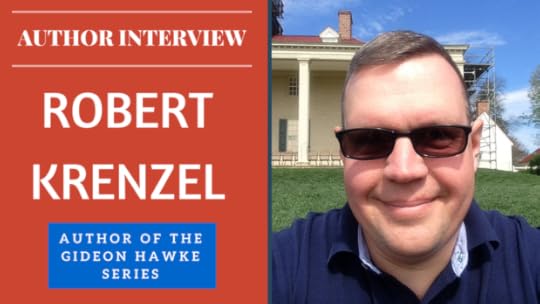
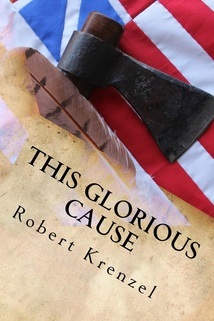 I'm happy to present my first author interview. Today, I'm interviewing Robert Krenzel, author of the Gideon Hawke series. Robert is a retired army officer who served for over twenty years. He now lives in Kansas with his wife and two children and is the author of a YA series. He was kind enough to do an interview for me about how his experiences in the army shaped his writing.
I'm happy to present my first author interview. Today, I'm interviewing Robert Krenzel, author of the Gideon Hawke series. Robert is a retired army officer who served for over twenty years. He now lives in Kansas with his wife and two children and is the author of a YA series. He was kind enough to do an interview for me about how his experiences in the army shaped his writing. During your career in the US army, you have been posted to various places. Can you describe an experience abroad that has deeply influenced you?
Only one? I’m going to cheat and give you two experiences that specifically shaped my writing. While stationed in Germany I deployed to Kosovo, where I worked very closely with the British units that were adjacent to my company’s sector. The Brits were consummate professionals, but they brought a wonderful sense of humor to our work. As a result, when I write about the British Army, I can never do so without a bit of a sympathetic pen, even when it’s 1776 they are burning their way across my home state!
The second experience was a roadside bomb detonation near Hawijah, Iraq in 2007. That was my introduction to combat, and it informs my perception of what goes on in a character’s head during battle.
What is the most challenging part about being a writer ?
For me, quite simply, it is finding time to write. I have a wonderful marriage, two very busy kids, and full-time job. It can be quite a challenge to find time to tap away on a keyboard. The notepad function on my iPhone has been a blessing; I’ve done some of my best writing on that tiny little screen!
How has being a father influenced your writing?
I am not sure I would be a writer were I not a father. It certainly affects my choice of words and subject matter: I will not write anything I will not let my son or daughter read. This may tone down my work slightly, but it also challenges me to convey my message in a way that can appeal to a broader audience.
List the best books you read this year (3-5)
This is a tough one! Should I not count This Glorious Cause? I will go with: Captured in the Caribbean, by Sara Whitford (a fun YA historical fiction novel by a really talented new author); Twelve Years a Slave, by Solomon Northup (yes, I just now got around to reading it, and I’m glad I did!); Rebel Song by Amanda Clay (a dystopian YA novel full of plot twists and turns); and What Pet Should I Get? by Dr. Seuss (not his best book, it was unfinished after all, but it is a new book by Dr. Seuss! What’s more the section at the end that offers insight into Ted Geisel and his methods is worth a read in its own right).
What are you working on currently?
I am putting the finishing touches on Times That Try Men’s Souls, the second novel in the Gideon Hawke series. This book picks up the story in July of 1776: America has just declared its independence, and the largest military force ever assembled (up to that point) has just arrived to contest that declaration. The Americans suffer setback after setback. Just when the protagonist, Gideon Hawke, thinks that all is lost for himself and his cause, the tide begins to turn. The Americans win at Trenton and Princeton, and the cause survives! I am crowd funding the publication of Times through Pentian Publishing. You can learn more at:http://pentian.com/book/fund/1554 .
Your books require a lot of research. How do you conduct research? How much of it is reading and how much is derived from experience?
I do research in a number of ways. I read a great deal, from a number of sources. I have made the acquaintance of a few experts on the age of gunpowder warfare, and they have been a huge help. I also make an effort to travel to the scene of the action whenever I can. While I was putting the finishing touches on my first novel, This Glorious Cause, I had the opportunity to visit New Jersey and explore Washington’s Crossing as well as the Trenton and Princeton battlefields. For me, touching the very ground over which my characters fight is a thrill, one that I hope comes to life in Times That Try Men’s Souls.
What makes a story extraordinary?
An extraordinary story takes the reader to another time and place. When I tear my eyes away from a book, glance at the clock, and realize I read for hours instead of the few minutes I intended…that’s a good read!
Any message for your readers?
The wait is nearly over! Times That Try Men’s Souls will be published in time for the 240th Anniversary of the Declaration of Independence. What’s more, I have started work on Gideon Hawke Number Three: A Nest of Hornets! This novel is set in New Jersey in the winter of 1777; it explores the constant skirmishing of “Forage War” as well as the tensions between American Patriots and Loyalists.
You can find Robert on his official website, http://robertkrenzel.com/
Connect with him on his social media pages:
Facebook Page
Gideon Hawke Novels Facebook Page
Amazon Author Page
You can buy his books here:
This Glorious Cause (Gideon Hawke #1)
Support Robert's next book, Times That Try Men’s Souls (Godeon Hawke Series #2)
To read my interview on Robert's blog, go here.
Click here to visit Robert's website
Many of the people we consider heroes are ordinary people who found themselves in extraordinary circumstances and rose to the occasion.- Robert Krenzel
Published on December 04, 2015 17:02
November 27, 2015
5 Ways to Make Writing a Habit
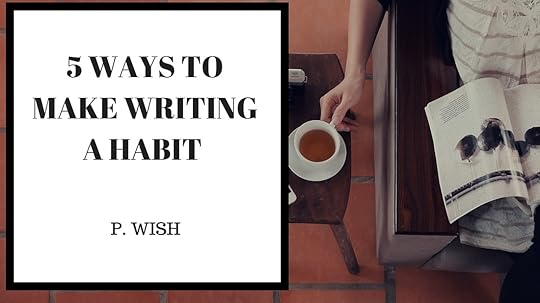 November is almost over. I hope many of you finished the novel you pledged to write this month. Now comes the revision phase. I will write about those things in future articles. This week, I want to focus on making writing a habit. Many writers forget all about writing after the month is over. To reap benefits from your Nanowrimo experience, you need to make writing a habit.
November is almost over. I hope many of you finished the novel you pledged to write this month. Now comes the revision phase. I will write about those things in future articles. This week, I want to focus on making writing a habit. Many writers forget all about writing after the month is over. To reap benefits from your Nanowrimo experience, you need to make writing a habit. Winter is here. That means you’re more likely to cuddle up at home than go outside. There is no better time to write. Instead of spending all that time on Netflix or in front of the television, try using the following tips to get some writing done.
Tap into inspiration: Strike when the iron is hot. Write when inspiration strikes. Don’t fret about planning and editing while you write. Being inspired is a magical feeling. It makes your fingers move at the speed of light across the keyboard. When a great idea strikes, simply write it down. Type as much as you can until the fever passes. I usually find that I type as much as 5000 words in one go when I’m inspired. You may decide to shelf the project or plan it out later. What’s important is getting those first few words on paper. This will help you stay on track and expand your writing. Do not judge the story at this point. Let it flow from your heart.
The fifteen-minute sprint: I learned this method from Chris Fox, writer of 5000 words per hour. Surprisingly, it works. Write whenever you have the time. You don’t have to write a thousand words, a page or even wait to find three hours of ‘me’ time. Write between phone calls. Write for an extra fifteen minutes during lunch break. Write ten minutes before you go to sleep. Every little counts. Even if you don’t manage to finish a novel, you’ll be a better writer for it.
Stick to a Schedule: This tip works for people who like to plan. Stick to a routine. For example, I write 10-12 pm every night. I find that I have no distractions during that time because everybody is asleep. My mind works optimally and my inhibitions are low. For some, this time may be an hour or two after you wake up. Choose whatever time slot suits you and stick to it. Write at the same time every day. It will become a habit. The other tips lead to this one. If you want to be a professional writer, it is important to set aside time for writing.
The sneaky writer: Did an idea strike you while you’re at a dinner party? Ideas don’t always pop up at the right time and place. However, that doesn’t mean you miss it. Carry a device which you can use to type. Though smartphones are slow, it’s better than nothing. Write while you’re getting bored at lectures or dinner parties. Write down the main idea using an app like Evernote or simply the reminder. If you have more time, you can even begin to type words of your novel. If you’re thinking it’s going to lead nowhere, hold your breath. In Japan, many cell-phone novelists have written full-length novels. They too started with a few words on the phone.
Adventure: Make writing an adventure. Try writing a genre you’ve never written before. If you’re not one to plan, try planning your next novel. Write while exercising or while on a vacation. Challenge yourself with new ideas. The adventure component makes writing something to look forward to. It keeps things exciting. Try writing the story backwards. Or write it using the vocabulary of your five-year-old child. The possibilities are endless.
I hope these tips help you stay on track. Please comment and let me know any other tips that you use. If you liked the post, share with your friends. Click here to read more articles like this
Published on November 27, 2015 16:59
November 20, 2015
8 Ways to Make Research Interesting
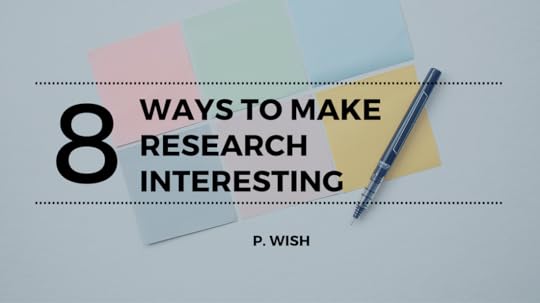 I am back with a writing-related post.
I am back with a writing-related post. This post is for any fiction writer who thinks research is boring. The word ‘research’ paints images of long, lonely hours in the library. A more interesting version is observing the military base or the local police department. However, most new writers don’t have resources to do either of those things. Here are a few ways to make research fun. In the era of youtube and internet, research is more visual and interactive than it ever was.
Images and Videos: A picture speaks a thousand words. Run an image search to get a feel for the location you’re writing about. Looking through a few pictures of the city gives you a feel for it. That will help you write better description. Next, watch some videos about the profession or city you’re researching. Videos give you al feel for the city. The engage more of your senses. Listen for sounds. What kind of sounds do you hear in the video? While Lonely Planet-style travel videos help you get an idea of the setting, they’re glorified. To get under the skin of your character of setting, watch vlogs or self-recorded videos. The same applies to say, forensics. Watching videos cuts learning time and increases engagement. Blogs- There are all kinds of bloggers. If you’re writing about a kindergarten teacher living in Ohio, read a blog by one. There are blogs about almost everything. Find blogs in the niche you want to research. Informative blogs are also a good idea. Follow a few blogs in the category you want to research.. Here, the focus is on how the writer interacts with the setting. There are factual blogs too and these are great when looking for information. However, the real value of blogs lies in their ‘personal touch’. Social Media- Stalk, stalk, stalk. I know, that is terrible advice, but it makes research more interesting. I’m not telling you to stalk people in real life (that’s a crime!). Stalk social media profiles of bloggers or people who live in the city you’re setting your story in. Their opinions and images give you a better idea of the city. This ‘local’s perspective’ is very important to make the story realistic. If you’re writing about a cop, try looking up social media profiles of cops. You could also look up pages of police departments for an idea of your character's daily life (I'm not sure they put those online but you get the idea.). Many insurance companies use Facebook to investigate their customer so why can’t you? Facebook and Instagram are the best for research as these focus more on personal aspects of your subject’s life. Write it down! - Recent studies have shown that those who write tend to do better. Write down the information you’re gathering. All that information swimming on the computer screen won’t help you remember anything. Take notes. Bookmark useful websites so you can come back to them. If you’re searching train routes, try plotting them on a timeline. Go through property listings- I love looking at houses and interior decoration. This tip is especially useful if you’re researching settings. Try looking for properties to rent and buy. Observe the images, read the specifics (facilities, tax etc.) and costs. It puts you in the shoes of your character. The prices and character of the neighbourhood are important considerations. If you’re character works in the media industry make sure to choose a location that media-types would live in. Acting- Like an actor needs to get into the skin of their character, a writer needs to live and breathe as the character would. Put yourself in the situation your characters are in. This will help you write better prose as you empathise with what the character is going through. This also helps interweave your research into dialogue. There’s an actor in all of us. Imagine yourself speaking the character’s language, living in their location and doing their job. Whatever it takes. With a little help from my friends: In today’s multi-cultural world, many of us have friends from different cultural, religious, ethnic, professional and personal backgrounds. If you’re writing a book which features themes that your friends are familiar with, ask them for help. This is a great way to deepen your friendship while getting some research done. Plug your experiences: Try to plug your personal experiences to the subject you’re researching. Do this after you’ve finished primary research and have a broad idea of the subject. For example, you many not be in the same line of work as your character but you will have experienced feelings of elation, frustration, sadness, tenderness similar to your character. Plugging your character to your life experiences helps write more three-dimensional pieces.
That’s it for today. I hope these tips helped you make research a bit more enjoyable. If you liked the post, please share it on social media. Sharing is caring!
If you have any others tips, add them in the comments section. Looking forward to seeing you again next week. Tweet & ShareTweet: Hate research? Try these 8 tips to make research fun. http://ctt.ec/37CVE+ @authorpwishTweet: 8 Research tips for fiction authors. Research was never this fun. http://ctt.ec/24cs8+ @authorpwishWant to read more articles on writing? Subscribe to my newsletter to get a new article every week. #mc_embed_signup{background:#fff; clear:left; font:14px Helvetica,Arial,sans-serif; } /* Add your own MailChimp form style overrides in your site stylesheet or in this style block. We recommend moving this block and the preceding CSS link to the HEAD of your HTML file. */Subscribe to our mailing list
Published on November 20, 2015 01:22
November 13, 2015
Self-Publishing Resources: Marketing and PR
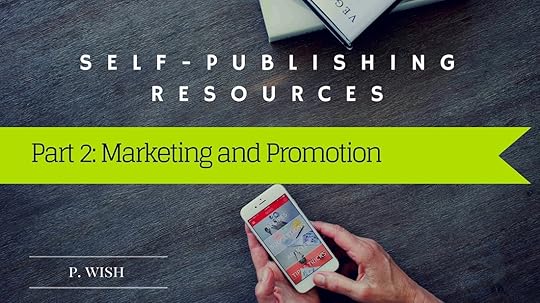
 Self-Publishing Resources Part 2
Self-Publishing Resources Part 2Marketing and PR
Here is the second installment of the self-publishing resources series. If you haven't watched the series trailer, you can watch it here. This week's article will focus on marketing and PR resources for new self-published authors.
Marketing
General Resources
First 1000 books by Time Grahl
This book is popular among self-published authors. Tim’s website contains a list of useful resources that are free. If you want to try before you buy, check the resources out. You can also subscribe to his newsletter to get useful tips delivered to your inbox. His resources are accessible to first-time writers. I recommend you start here. I love his free guide on how to make an author website.
I would also recommend Plug your book by Steve Weber and 1001 Ways to Market your book by John Kremer . I read both ten years ago. They are useful guides, however, both need to be updated which is why I didn’t include it in the main section.
Reviews
7 Strategies and 110 Resources
This is one of the most comprehensive lists available on the internet. The list contains websites where you could get interviews as well as the contact details of more than two hundred indie book reviewers. It also has a list of websites where you could host a giveaway, advertise and crowdsource. If you like all your eggs in one basket, check this page out. It is a good overview.
Kirkus reviews
This one has been around for ages. It provides good exposure but comes with a heavy price tag. If you can afford it, visit their website to buy a review.
NetGalley
Net Galley is perhaps the most popular website for authors to connect with bloggers. You can purchase their package and upload your book for a limited time. During this time, it will be available to all interested bloggers and reviewers. It is free to read books, but you need to pay to upload yours. To check the prices and learn how it works, visit their website.
Story Cartel
Story Cartel is a cheaper alternative to Net Galley. Their service is fast. You need to buy launch coupons for your books. When you launch the book, it will be available to download and review. They also give you the e-mail addresses of those who downloaded your book. One launch is three weeks with one week for reviewers. You can launch the same book multiple times. You can also read other people’s works and review them (reading is free).
(PS: My book Into the Light is available on Story Cartel now. If you’re interested, click here to download a copy.)
Marketing Checklists
Marketing checklists can shave time off your promotion agenda. These checklists are a boon for new authors as they tell you what to do step-by-step. I used the following to make a marketing plan for Into the Light.
Book Marketing Tools
Book marketing tools is a great website for marketers. The website is regularly updated with new articles. They do a podcast with self-published authors. I suggest you follow them on social media to stay updated. They have a multitude of resources for new authors. I recommend the self-publishing checklist.
Curiouser Editing Pre-Release Checklist
Many first time authors leave marketing to after the book release (I know I’m guilty of that). This pre-publishing checklist breaks down what you need to do before your book goes live. This checklist was immensely helpful in creating a marketing plan and keeping this organized. Allow at least two to three months for pre-release marketing.
Blog tour
I do not recommend any particular blog tour website. There are many blog tour providers. Authors can also organize their own blog tour. I am not very convinced about the utility of blog tours in helping first-time authors gain publicity.
Social Media
The Art of Social Media by Guy Kawasaki and Peg Fitzpatrick
This book makes social media easy. If you follow my review blog on Booklikes or Goodreads, you’ve heard me rave about this book. It is short, filled with images and has exactly the right amount of information for a first-time author. If you’re new to social media or want to make a social media marketing plan for your book, I recommend you read this one.
Social Media Management Software
I recommend using a post scheduler like Buffer or Hootsuite to manage your social media profiles. In the beginning, it will be pretty manageable but as the load grows, it gets hectic. I personally use Buffer and I like it. It is easy to use and you can try the free version for as long as you like. They send you a report each week.
PR
Books
The Frugal Book Promoter by Carolyn Howard-Johnson
This is the essential PR guide for authors. There aren’t many books on public relations for new authors. The book is comprehensive and contains information on how to write press releases, get the word out about your book and work TV and radio.
The Future of PR by David Meerman Scott
This one is a more traditional marketing book that does not apply specifically to books. However, I prefer it to the other one. It is more general and the tips can be applied to any field. It debates the death of traditional print media presenting blogs as an alternative. I reviewed this book on Goodreads. I read the old version, but an updated version is available now.
Blogging
Wordpress
Wordpress is the standard in blogging. It is also used to create websites. If you’re new to blogging, you can get a free Wordpress hosted blog. There are many resources that help you create and maintain a blog. Jane Friedman has a guide for beginners (https://janefriedman.com/blogging-for...). You can also use Tim Grahl’s book to enhance your blog.
Free PR Websites
HARO
This is the most popular PR website. HARO stands for Help A Reporter Out. This website sends you an e-mail three times a day. You can reply to any requests that pertain to your expertise. The emails are filtered according to your geographical region. This is a good way for new authors to get publicity. If you find any of the requests match your expertise, you can pitch journalists.
Sourcebottle
Sourcebottle is a website similar to HARO. It is an Australian website that allows new business owners or authors to gain publicity. It has many articles that are targeted towards small business owners and lifestyle bloggers. If you write about any of these things, you may be able to find publicity opportunities.
I hope you found this post useful. If you did, please share and spread the love. I will do an article about my self-publishing experience next week. If you have any questions, drop me an e-mail or comment. Subscribe to my newsletter for updates.
Tweet and ShareTweet: A helpful list of marketing resources for authors: http://ctt.ec/o_tVu+ #promotionTweet: Want to get a word out about your book? Try these tips @authorpwish http://ctt.ec/Yf9c3+ #promotionWant more? Subscribe to my newsletter for more tips. #mc_embed_signup{background:#fff; clear:left; font:14px Helvetica,Arial,sans-serif; } /* Add your own MailChimp form style overrides in your site stylesheet or in this style block. We recommend moving this block and the preceding CSS link to the HEAD of your HTML file. */
Published on November 13, 2015 16:56
November 6, 2015
Self-Publishing Resources: Book Production

 Self-Publishing Resources
Self-Publishing ResourcesPart 1
The Book: Cover, Formatting, and Editing
This article is a collection of resources for self-published writers. The first part of this series will focus on resources to enhance your book (cover design, formatting, and editing). I have tried to include as many free resources as possible because I want to make this article accessible to first-time writers. Producing a book is exciting. Personally, I enjoy designing, formatting and polishing my book. Even if you don’t enjoy these things, these resources are here to help you out.
Books
APE (Author Publisher Entrepreneur) by Guy Kawasaki
This is a must have book for anyone new to self-publishing. Guy Kawasaki covers the basics of formatting, editing, writing, publishing and marketing your self-published book. The book has a comprehensive list of resources for new writers. The writing style is humorous. The book also has its own website and a Google+ community.
http://apethebook.com
Author 2.0 by Joanna Penn
Joanna Penn’s blog is an essential resource for any self-published writer or authorpreneur. The website has interviews, free ebooks, podcasts, advice and much more. I found many of these resources and tips on her website. You can download her book Author 2.0 on her website. It will put you on the right track. This was the first book I read when I became a self-published writer. You can find other books by her on her website.
http://www.thecreativepenn.com
Cover Design
Canva
Canva is a website that helps you design beautiful graphics for social media, ebooks, and other promotional events. I have used other websites that offer similar features, but I find that Canva offers the best quality. They have pre-set formats for various social media profiles. They have different sizes for Kindle ebooks and regular ebooks. The designs are visually appealing and high quality. You need to pay a dollar for most images and some designs. However, this website is worth it. If you want to design your own high-quality ebook cover, Canva is the way to go.
https://www.canva.com
Fiverr
Fiverr is a popular website that offers services for $5. You can find people to format, edit and design your book. Though I’m not sure about how well the formatting and editing works, the cover design is a safe bet. If you want a professional cover design but can’t afford big budget designers, try this website. It is good place to find illustrators and cover designers.
https://www.fiverr.com
Peopleperhour
Peopleperhour is similar to Fiverr. It is a website where you can find and hire freelancers. I find this website works best for online marketing, editing and formatting. It is a good place to find editors and formatters at a low price. The ones at Fiverr usually don’t edit full-length novels. The services are cheaper. If you’re looking for a good deal, try here. I have used it in the past and the service is good.
https://www.peopleperhour.com
Adazing Design
Adazing design offers some really good resources for creating 3D mockups of your books. This site has a broad range of free resources that help you generate mockups, bestseller logos, barcodes, photoshop book covers, book sale sheets, book spines etc. The website also has a ‘top secret’ list of famous editors. If you’re looking for an editor, this is a useful resource.
http://www.adazing.com
http://www.adazing.com/cover-mocks/
Royalty-Free Stock Images
Death by Stock Photo
This is by far one of the best resources I have come across. Death by Stock photo is a free service that sends a pack of photos to your e-mail every month. The photos are high quality, stock images that are royalty-free. You need to sign up on their website to receive the images. I find that these images work well with Canva layouts. These photos work well for blog posts and book covers.
http://deathtothestockphoto.com
Creative Commons Image Search
You can search for images that have Creative Commons licenses on their website. Some images may need to be credited. Make sure you read through the specifics of the copyright before downloading and using the images. The search incorporates images from many websites such as Pixabay, Flickr and Google image search
https://search.creativecommons.org
Formatting
Adobe Indesign
This is the industry standard. Adobe offers this software as a monthly subscription. To check the latest rates, visit their website.
http://www.adobe.com/in/products/indesign.html
CreativeIndie templates
The day I found this was the happiest day of my life (at least for that week). The formats are beautiful and professional. The formats are useful for those who don’t have Indesign or can’t use it. They work with MS Word (and Pages for MAC users). This is a very good resource for the technologically challenged.
http://www.diybookformats.com/freebookformatting/
Editing
Beta Readers
Beta readers critique your story based on characters, ideas, storyline, plotting, and structure. This is the first stage of your editing and re-writing process. Though some people get their family and friends to act as their first readers, this strategy has its downsides. Make sure your Beta reader is close to the ideal reader (i.e the target audience). You may also find someone who is a professional. Many professional beta reading services are available. However, if you’re a new author, you can cut costs here. There are many avenues to find free beta readers. You can join a writer’s group, online forums, give a shout out on your social media or share the manuscript with those subscribed to your newsletter. The link to the Goodreads group is in my earlier post (Resources for genre fiction writers).
Here are a few places to find beta readers:
Absolute write: http://absolutewrite.com/forums/forumdisplay.php?30-Beta-Readers-Mentors-and-Writing-Buddies
You can find Jae’s article on 15 ways to find Beta readers here: https://jaefiction.wordpress.com/2012/07/20/15-ways-to-find-a-beta-reader-or-critique-partner/
If you’re a female author, you can find critique partners at Ladies who critique: http://www.ladieswhocritique.com/get-started/
Besides these, there are many Yahoo, Google+ and Facebook groups. Run a search to find some relevant to your genre.
Freelance Editors
Finding an editor for your book is a personal journey. It depends on many factors such as your budget, genre, preferences, geographical region, working style etc. As I mentioned above, Adazing has a list of editors who have edited novels that have made it to the New York Bestseller lists.
If you’re on a tight budget, you can find editors on Peopleperhour, Goodreads forums, writing forums and google search. Opt for editors who offer a sample edit so that you can see if they would work for you. There are different types of edits like developmental edits (also called beta reads), line editing, and proofreading. In this book, APE, Guy Kawasaki says that he believes line editing to be the most important type of editing. Even if you skimp on the others, make sure to hire someone to line-edit your work.
Editing Software
I also mentioned these in my earlier post. Self-editing softwares have gained popularity. I use them because they are cheap, convenient and help you filter out basic errors. Grammarly, Pro-writing aid and After the deadline a few of my go-tos. Let me know if you want a review of any of these.
http://www.prowritingaid.com
https://app.grammarly.com
http://www.afterthedeadline.com
I hope you found this article helpful. It is aimed at those who are new to self-publishing or on a tight budget. If you want to see a review of specific websites or softwares, drop me a line. I will see you next week with the second part of the self-publishing series which focuses on marketing resources. Please share if you liked the post. #element-63dcd3d3-0cdb-4e4a-9315-8f38f9086b56 .callout-box--standard { border: 4px solid #a9e976; background: #a9e4f8; padding: 40px; margin: 20px 0;}#element-63dcd3d3-0cdb-4e4a-9315-8f38f9086b56 .callout-box--material { border: 4px solid #a9e976; background: #a9e4f8; padding: 40px; margin: 20px 0; box-shadow: 0 0 20px rgba(0,0,0,0.15);}#element-63dcd3d3-0cdb-4e4a-9315-8f38f9086b56 .callout-base { border: 4px solid #a9e976; background: #a9e4f8; padding: 40px; margin: 20px 0;}#element-63dcd3d3-0cdb-4e4a-9315-8f38f9086b56 .material { box-shadow: 0 0 20px rgba(0,0,0,0.15);} Liked the Post? Click here to read the other posts in this series
Published on November 06, 2015 00:35

